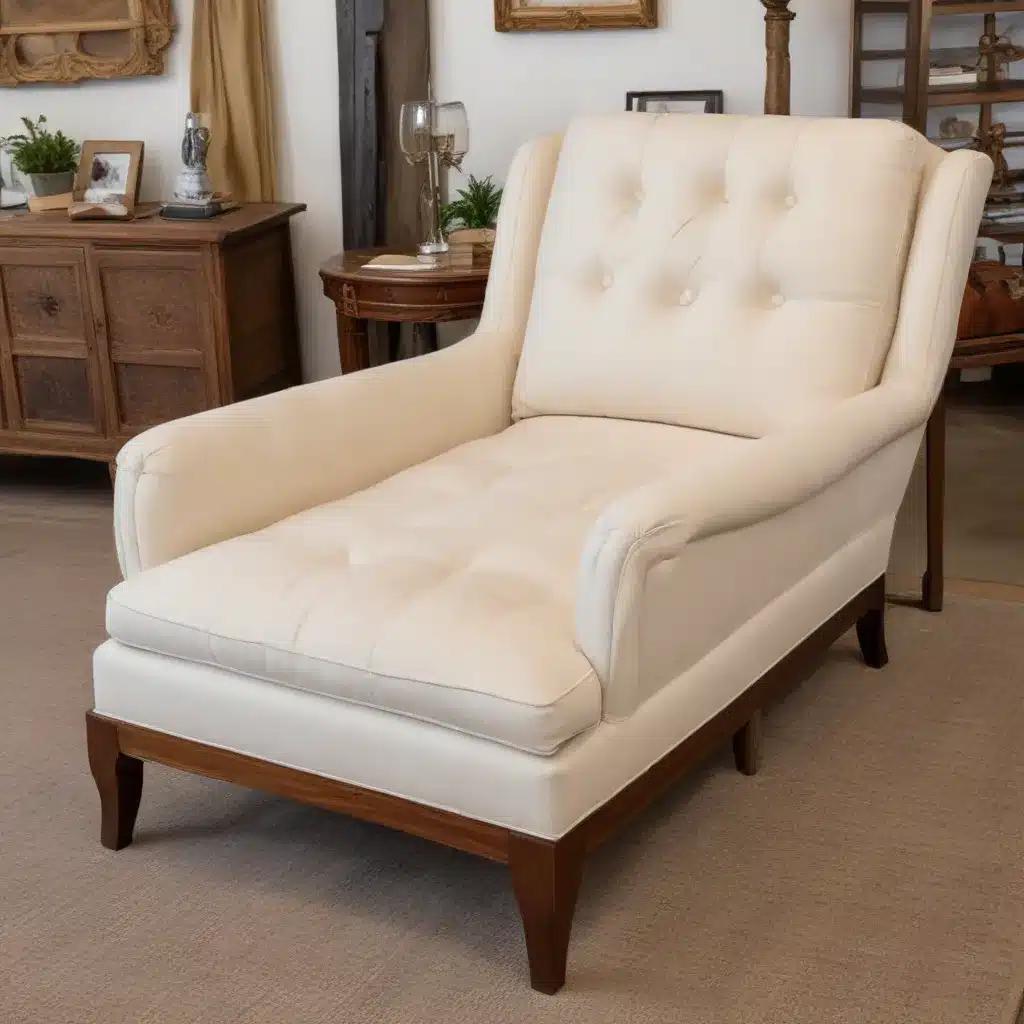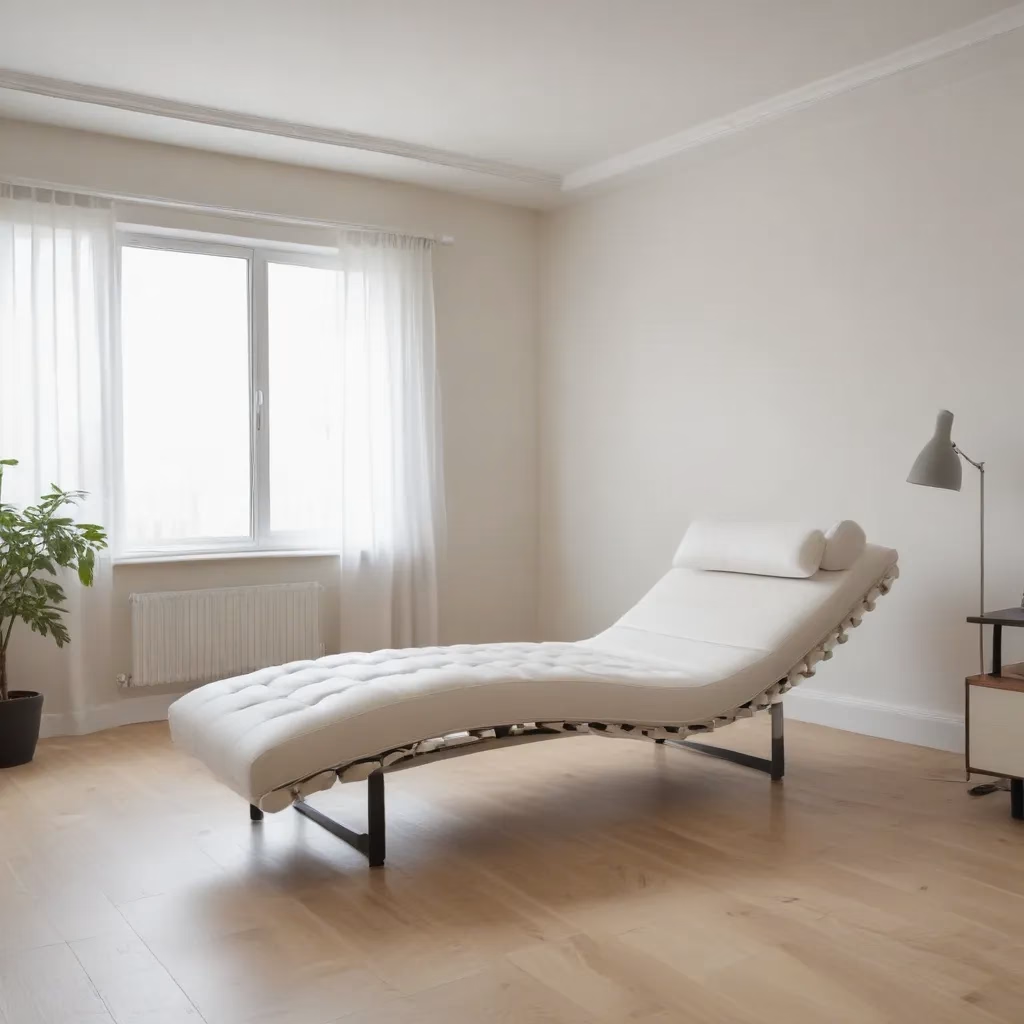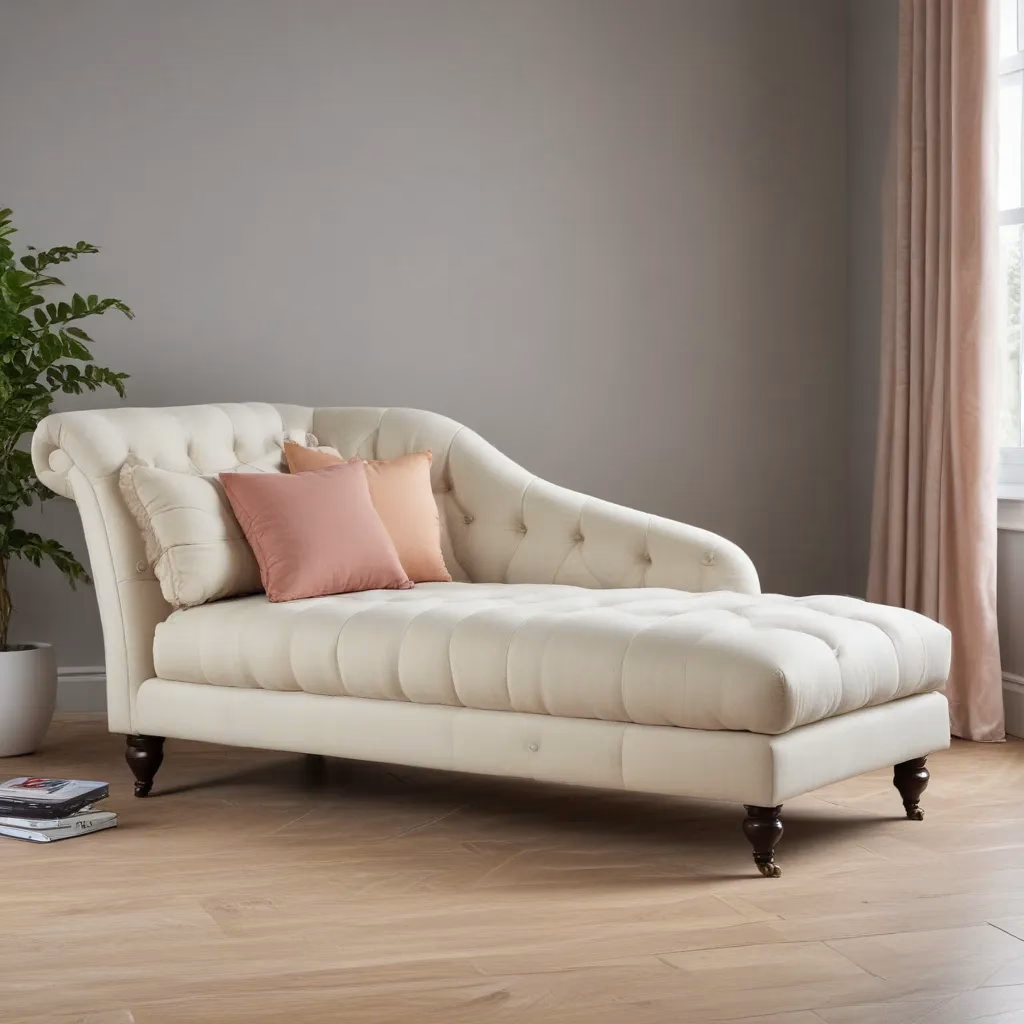
The Art of Chaise Selection
As a furniture specialist with years of experience, I’ve seen countless trends come and go. But one piece that has stood the test of time is the chaise lounge. It’s a versatile and elegant addition to any room, offering both style and comfort. When selecting a chaise, there are several factors to consider.
Firstly, think about the space where you’ll place your chaise. Will it be a statement piece in your living room, or a cozy nook in your bedroom? The size and layout of the room will influence your choice. I once worked with a client who had a small apartment but desperately wanted a chaise. We opted for a compact design that fit perfectly in a corner, creating a charming reading spot without overwhelming the space.
Next, consider the style of your existing decor. A chaise should complement your overall aesthetic. In my experience, transitional styles work well in most homes, bridging the gap between traditional and modern. However, if you’re aiming for a bold look, don’t be afraid to go for something more dramatic. I’ve seen stunning modern chaises with sleek lines that become the focal point of a room.
Comfort is paramount when it comes to chaises. After all, these pieces are designed for lounging. When testing a chaise, pay attention to the cushion density and back support. A well-crafted chaise will offer a balance of softness and structure. I always recommend sitting on a chaise for at least 10 minutes to get a true feel for its comfort level.
Customization: Making Your Chaise Truly Yours
One of the joys of working with chaises is the level of customization available. Many manufacturers offer bespoke options, allowing you to create a piece that’s uniquely yours. This process can be exciting but also overwhelming if you’re not sure where to start.
From my experience, the first step in customization is choosing the dimensions. Consider who will be using the chaise most often. If it’s for a tall person, you might want to opt for a longer length. If it’s going in a cozy corner, you might need to adjust the width. I once worked on a project where we created a custom chaise for a client with back problems. We adjusted the angle of the backrest and added extra lumbar support, resulting in a piece that was both beautiful and therapeutic.
Upholstery is another area where you can really make your chaise stand out. The fabric you choose not only affects the look but also the durability and maintenance of your piece. For high-traffic areas or homes with pets, I often recommend performance fabrics that resist stains and wear. On the other hand, if you’re looking for luxury, nothing beats the feel of high-quality leather or velvet.
Don’t forget about the details! The leg finish, piping, and even the direction of the chaise (left or right-facing) can all be customized. I always encourage my clients to think about how they’ll use the chaise. For example, if it’s going to be used for reading, we might add a small side table or incorporate a built-in bookshelf.
Maintaining Your Chaise: Tips from a Pro
Once you’ve selected and customized your perfect chaise, it’s essential to know how to care for it. Proper maintenance will ensure your chaise remains beautiful and comfortable for years to come.
Regular vacuuming is the first line of defense against dirt and dust. Use a soft brush attachment to avoid damaging the fabric. For leather chaises, a gentle wipe with a damp cloth is usually sufficient. I’ve found that many people overlook the importance of rotating cushions. This simple step can prevent uneven wear and extend the life of your chaise.
For deeper cleaning, the method will depend on your upholstery material. Most fabric chaises can be cleaned with a mild detergent solution. Always test on an inconspicuous area first! I once had a client who used a harsh cleaner on their velvet chaise, resulting in a discolored patch. We were able to fix it, but it was a costly lesson in the importance of gentle cleaning methods.
If your chaise is in a sunny spot, consider using a throw or slipcover to protect it from fading. UV rays can be particularly damaging to certain fabrics. I’ve seen beautiful chaises ruined by sun exposure, so don’t underestimate the power of prevention.
For outdoor chaises, weather-resistant fabrics are a must. These materials are designed to withstand sun, rain, and even mildew. However, they still require care. I recommend storing outdoor cushions when not in use or investing in a good quality cover.
Chaise Design Trends: What’s Hot in the World of Lounging
As someone who’s been in the furniture industry for years, I’ve witnessed the ebb and flow of design trends. When it comes to chaises, we’re seeing some exciting developments that blend comfort with style.
One trend that’s gaining traction is the modular chaise. These versatile pieces can be reconfigured to suit different spaces and needs. I recently worked on a project where we used a modular chaise as part of a sectional sofa. The flexibility it offered was a game-changer for the client, who loved to entertain but also wanted a cozy spot for movie nights.
Another trend I’m excited about is the return of bold patterns and colors. While neutral chaises will always have their place, I’m seeing more clients opt for statement pieces. Jewel tones and geometric patterns are particularly popular. I helped a client choose a sapphire blue velvet chaise for their study, and it transformed the entire room.
Sustainability is also becoming a major consideration in chaise design. More manufacturers are using eco-friendly materials and production methods. From recycled fabrics to FSC-certified wood frames, there are now many options for the environmentally conscious consumer. I find this trend particularly rewarding, as it allows us to create beautiful spaces without compromising our values.
The Role of Chaises in Interior Design
As an interior design element, chaises offer unique opportunities to enhance a space. Their distinctive shape can add visual interest and create a sense of flow in a room. I often use chaises as a way to define areas within larger spaces.
In open-plan living areas, a well-placed chaise can create a cozy reading nook or a conversation area. I once worked on a loft conversion where we used a chaise to carve out a relaxation zone within the larger bedroom space. The result was a multifunctional room that felt both spacious and intimate.
Chaises can also be used to add a touch of luxury to unexpected places. I’ve incorporated them into dressing rooms, creating a comfortable spot for putting on shoes or just taking a moment for oneself. In one project, we even added a chaise to a large bathroom, turning it into a spa-like retreat.
When it comes to arranging furniture around a chaise, balance is key. I like to pair them with smaller accent chairs or side tables to create a cohesive seating area. In larger rooms, a chaise can be a great way to break up the space and create visual interest.
The Future of Chaise Design: Innovations on the Horizon
As we look to the future, I’m excited about the innovations happening in chaise design. Technology is playing an increasingly important role, with smart features being incorporated into furniture.
Imagine a chaise that can adjust its temperature based on your body heat, or one that has built-in charging ports for your devices. These aren’t just futuristic concepts – they’re becoming reality. I recently attended a furniture expo where I saw prototypes of chaises with integrated massage functions and even voice-controlled adjustments.
Material science is another area of rapid development. New fabrics are being created that are more durable, stain-resistant, and environmentally friendly than ever before. I’m particularly interested in the development of self-cleaning fabrics, which could revolutionize furniture care.
3D printing is also making waves in the furniture industry. This technology allows for incredibly precise customization and could potentially reduce waste in the manufacturing process. While it’s still in its early stages for large furniture pieces like chaises, I believe it will play a significant role in the future of furniture design.
Choosing the Right Chaise for Your Lifestyle
When advising clients on chaise selection, I always emphasize the importance of considering their lifestyle. A chaise that works perfectly for one person might be impractical for another. It’s not just about aesthetics – it’s about how the piece will function in your daily life.
For families with young children or pets, durability is often a top priority. In these cases, I recommend chaises with removable, washable covers or those upholstered in performance fabrics. I once worked with a family who loved the look of a white linen chaise but were worried about stains. We found a solution in a white performance fabric that looked like linen but could withstand spills and paw prints.
For those who love to entertain, a chaise with a sleeper function can be a great addition. These pieces offer extra sleeping space for guests without taking up additional room when not in use. I’ve had clients who were skeptical about sleeper chaises, worried they’d be uncomfortable. But modern designs have come a long way – many now offer the same level of comfort as a regular bed.
If you work from home, consider a chaise with good back support. Some designs even come with adjustable backs, allowing you to sit up comfortably with a laptop. I helped a writer choose a chaise for her office that doubled as a comfortable spot for reading drafts and a place to relax during breaks.
The Psychology of Comfort: Why Chaises Matter
As a furniture specialist, I’m fascinated by the psychological impact of our surroundings. Chaises, with their invitation to relax and recline, can play a significant role in creating a sense of comfort and well-being in a home.
There’s something inherently luxurious about a chaise. It speaks to leisure and self-care in a way that few other furniture pieces do. I’ve had clients tell me that adding a chaise to their home has changed their daily routines, encouraging them to take more time to relax and unwind.
The act of reclining itself has been shown to have psychological benefits. It can lower blood pressure and reduce stress. When we’re comfortable, we’re more likely to engage in activities that bring us joy, like reading or contemplation. I once designed a space for a client who wanted a “thinking spot” – somewhere she could go to brainstorm and reflect. A beautifully crafted chaise became the centerpiece of this space, providing both physical and mental comfort.
Color psychology also comes into play when choosing a chaise. Cool blues and greens can create a calming atmosphere, while warmer tones like reds and oranges can energize a space. I always discuss color options with my clients, considering both their personal preferences and the overall mood they want to create in the room.
Chaises Through History: A Journey in Design
As we look at modern chaise designs, it’s fascinating to consider their rich history. The chaise lounge as we know it today has its roots in ancient Egypt, where pharaohs reclined on long, narrow couches. The concept evolved through the centuries, gaining popularity in France during the 16th century.
The term “chaise lounge” is actually a combination of French and English. “Chaise” is French for chair, while “lounge” is English. This linguistic blend reflects the global influence on furniture design. I find that understanding the history of a piece can deepen our appreciation for it.
In the 18th and 19th centuries, chaises became associated with luxury and leisure. They were often found in the boudoirs of wealthy women, providing a place for rest and socializing. Today, we see echoes of these historical designs in many contemporary chaises.
One of my favorite projects involved restoring a Victorian-era chaise. The craftsmanship was exquisite, with intricate wood carving and sumptuous velvet upholstery. We updated it with modern materials while preserving its historical character. It was a beautiful reminder of how furniture design evolves while still honoring its roots.
The Art of Mixing: Incorporating Chaises into Different Design Styles
One of the challenges – and joys – of working with chaises is incorporating them into different design styles. Their versatility allows them to complement a wide range of aesthetics, from traditional to ultra-modern.
In traditional settings, a tufted leather chaise can add a touch of timeless elegance. I once worked on a project for a historic home where we placed a classic Chesterfield-style chaise in the library. It fit perfectly with the room’s rich wood paneling and antique books.
For more contemporary spaces, sleek, low-profile chaises can create a streamlined look. I’m particularly fond of mid-century modern inspired designs, which often feature clean lines and tapered legs. These can work well in minimalist interiors or as a contrast piece in an eclectic space.
Bohemian or eclectic styles offer a great opportunity to have fun with chaise design. Think bold patterns, unusual shapes, or unexpected color combinations. I once helped a client choose a rattan chaise for their sunroom, which we paired with colorful throw pillows for a laid-back, beachy vibe.
Industrial-style interiors can benefit from chaises that combine metal and wood elements. I’ve seen stunning designs that incorporate reclaimed wood or distressed leather, adding warmth to an otherwise stark space.
The Investment Value of Quality Chaises
When discussing furniture with clients, I often emphasize the importance of viewing quality pieces as investments. A well-made chaise can last for decades with proper care, making it a smart financial choice in the long run.
While it can be tempting to opt for cheaper, mass-produced furniture, I’ve seen firsthand how quickly these pieces can wear out or break. On the other hand, I have clients who are still enjoying chaises they purchased 20 or 30 years ago. The key is to choose pieces that are built with quality materials and craftsmanship.
When evaluating the quality of a chaise, I look at several factors. The frame should be made of hardwood, preferably kiln-dried to prevent warping. The joints should be reinforced with corner blocks for added stability. High-quality cushions will have a high-density foam core wrapped in softer materials for comfort.
Upholstery is another area where quality makes a big difference. Natural fibers like wool, cotton, and linen tend to wear better over time than synthetic materials. If you’re opting for leather, full-grain leather will develop a beautiful patina with age, unlike lower-quality leathers that may crack or peel.
I always advise clients to consider the long-term value when making their furniture choices. A quality chaise might cost more upfront, but it will provide years of comfort and style, often becoming a cherished piece that can be passed down through generations.
Final Thoughts on Chaise Selection
As we wrap up our exploration of chaises, I’m reminded of why I love working with these pieces so much. They offer a unique combination of form and function, adding both beauty and comfort to our living spaces. Whether you’re looking for a statement piece for your living room or a cozy spot to curl up with a book, there’s a chaise out there that’s perfect for you.
Remember, choosing a chaise is a personal decision that should reflect your individual style and needs. Don’t be afraid to take your time, explore different options, and even seek professional advice if you’re unsure. The right chaise can transform a room and enhance your daily life in ways you might not expect.
As you embark on your chaise-selecting journey, keep in mind the tips we’ve discussed – from considering your lifestyle and space requirements to thinking about long-term value and care. And most importantly, choose a piece that brings you joy. After all, a chaise is more than just a piece of furniture – it’s an invitation to relax, unwind, and enjoy the comfort of your home.
For more inspiration and expert advice on all things furniture-related, be sure to check out Sofa Spectacular. Happy chaise hunting!



